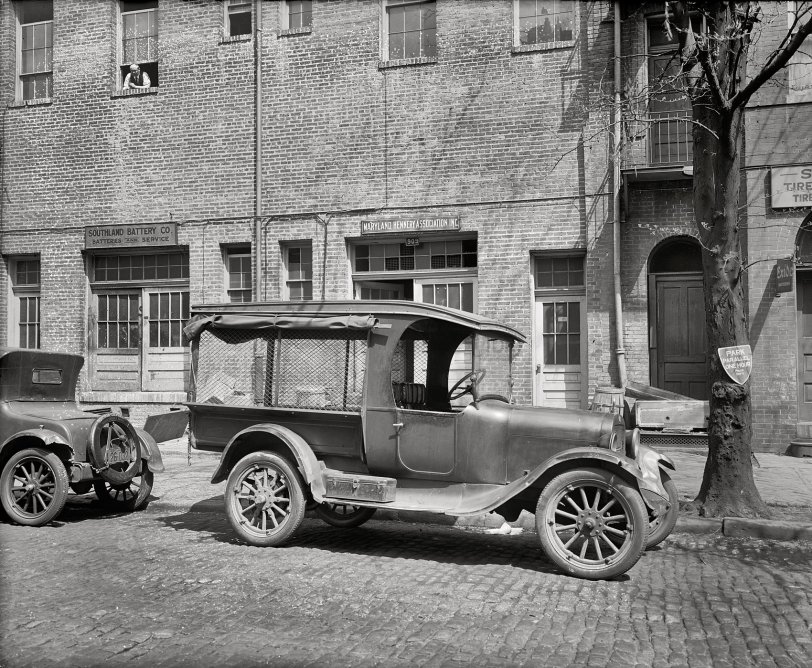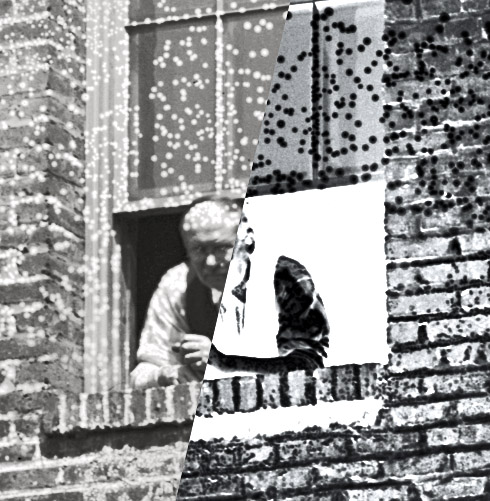


Framed or unframed, desk size to sofa size, printed by us in Arizona and Alabama since 2007. Explore now.
Shorpy is funded by you. Patreon contributors get an ad-free experience.
Learn more.

- Lost in Toyland
- And without gloves
- If I were a blindfolded time traveler
- Smoke Consumer Also Cooks
- Oh that stove!
- Possibly still there?
- What?!?
- $100 Reward
- Freeze Frame
- Texas Flyer wanted
- Just a Year Too Soon
- WWII -- Replacing men with women at the railroad crossing.
- Yes, Icing
- You kids drive me nuts!
- NOT An Easy Job
- I wonder
- Just add window boxes
- Icing Platform?
- Indiana Harbor Belt abides
- Freezing haze
- Corrections (for those who care)
- C&NW at Nelson
- Fallen Flags
- A dangerous job made worse
- Water Stop
- Passenger trains have right of way over freights?
- Coal
- Never ceases to amaze me.
- Still chuggin' (in model form)
- Great shot
Print Emporium
Maryland Hennery: 1926

Washington circa 1926. "Semmes Motor Co., Maryland Hennery Association truck." A hennery being a place where hens are raised. My Shorpy GPS (Guessing Possible Street) says this might be the back of a building that faced Pennsylvania Avenue. National Photo Company Collection glass negative. View full size.
Window Plotter
You just know that fellow in the window is planning the best trajectory for dropping eggs on the trucks below.
I'm Hennery The Eighth, I am...
Hennery the eighth, I am, I am.
Ourisman Chevrolet
It's interesting to see that even in 1926, auto dealers were putting that annoying "bought from" tattoo on the cars they sold.
[Although it is on a tire cover, not the car itself. - Dave]
Ah say, ah say
I can almost hear the mellifluous Southern tones of one Foghorn J. Leghorn saying, "I say get thee, I say get thee to a hennery, son!"
[Foghorn's "son" was named Henery -- Henery Hawk. - Dave]
Dodge truck
An early 1920's dodge screenside pickup. Dodge made a lot of these bodies for commercial use. Notice the screens on the side with roll up canvas covers. Commercial users of these units preferred Dodges because they had an all steel body. Note the steel tool box, mounted to the running board.
Green Acres
Forty years later, Mr. Haney was peddling his wares to Lisa & Oliver Douglas from this truck. Imagine, from Washington to Hooterville in only 40 years.
Illusion
It's interesting how the little spots, which are obviously some kind of growth on the film emulsion, do not appear in the open windows giving the vivid illusion that they are splatters on the wall. Of course the emulsion is thickest where black appears so the dots on the film have no effect. Let's see how many viewers fall for the illusion.
[It's the other way around -- the thickest emulsion is on the lighter parts of the positive image, which are the darker parts of the negative. The effect of mold on these glass negatives is to make the more opaque parts completely opaque -- on the positive image gray and whitish turn totally white. There are no spots on the black parts of the positive (around the man in the window, for example) because there's no emulsion there for mold to grow on -- on the negative those are the clear (white) parts. Although if mold did grow there, it would be the most noticeable -- white dots on a black background. - Dave]

























On Shorpy:
Today’s Top 5